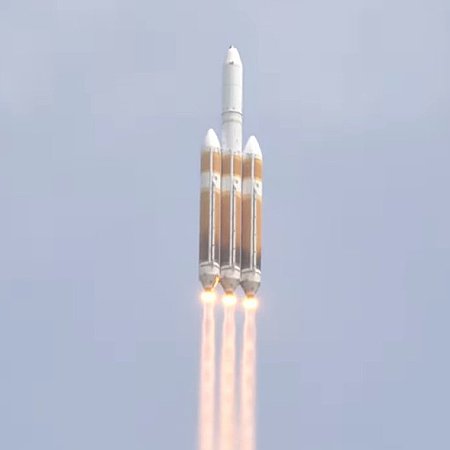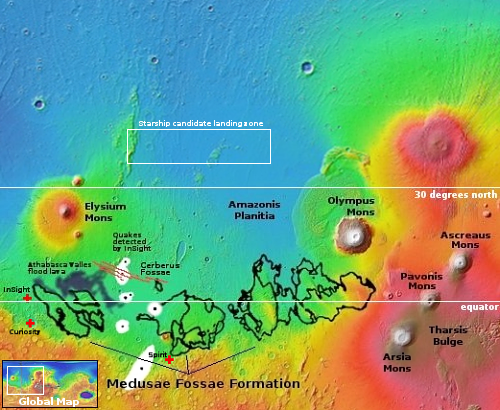The foot of a Martian glacier
Cool image time! The picture to the right, cropped, reduced, and enhanced to post here, was taken on February 18, 2024 by the high resolution camera on Mars Reconnaissance Orbiter (MRO). It shows what the scientists label as the “terminus of possible glacier-like feature.” That feature is at the lower left, at the point where glacier-like material appears to be flowing out of the channel from the northeast but then ending in an area of rough fingers.
That this looks exactly like a glacier does not guarantee that it is one, which is why the scientists insert the word “possible.” Nonetheless, the geology resembles that of a glacier, from the parallel lines along its length as well as its existence inside this channel. The location is also at 49 degrees south latitude, well within the mid-latitude strips on Mars where scientists believe many such glaciers exist.
The overview map below adds further weight to this conclusion. It also suggests that there are even more glaciers on Mars than research up to now has suggested.
» Read more
Cool image time! The picture to the right, cropped, reduced, and enhanced to post here, was taken on February 18, 2024 by the high resolution camera on Mars Reconnaissance Orbiter (MRO). It shows what the scientists label as the “terminus of possible glacier-like feature.” That feature is at the lower left, at the point where glacier-like material appears to be flowing out of the channel from the northeast but then ending in an area of rough fingers.
That this looks exactly like a glacier does not guarantee that it is one, which is why the scientists insert the word “possible.” Nonetheless, the geology resembles that of a glacier, from the parallel lines along its length as well as its existence inside this channel. The location is also at 49 degrees south latitude, well within the mid-latitude strips on Mars where scientists believe many such glaciers exist.
The overview map below adds further weight to this conclusion. It also suggests that there are even more glaciers on Mars than research up to now has suggested.
» Read more









